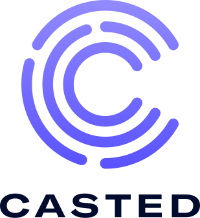Gated content is a marketing tool whose proper usage has been debated by marketers for years. If you gate your high-value content, will that drive enough engagement to outweigh the visibility gained from providing free, searchable content?
But both gated and ungated content have a time and place, especially for B2B content marketing. Let’s explore them both, compare their pros and cons, and most importantly look at when it’s best to use each approach.
What is Gated Content?
Gated content is any type of content that is hidden behind a form or popup that viewers can access only after exchanging their information (e.g. name, email address, etc.).
The most common reason for gating is to generate leads and therefore increase sales. It is used as a marketing tool for content that has been created for a specific audience. It is often found on long-form or other valuable pieces of content, such as webinars, ebooks, and whitepapers.
What is Ungated Content?
Ungated content is content created for viewers to browse at their leisure. You can usually find ungated content in SERPs and within a brand’s content hub. Free and fully accessible to the public without any exchange of information, the purpose of ungating is to build brand awareness and trust.
Content such as blogs, podcasts, videos, infographics, and case studies are generally left ungated.
The Pros and Cons of Gated Content
The decision to gate or not always centers around what your brand’s marketing goals are. The pros of gating all point to lead generation whereas the cons have to do with getting less visibility due to the deterrent of the gate. Each point must be considered prior to deciding whether or not to use this strategy.
Pros
- Gating your content generates qualified leads.
- It helps you gather targeted customer data, which is beneficial to business planning, R&D, business development, marketing, sales techniques, and more.
- Gating helps you generate specific mailing lists and grow your mailing list as a whole.
- You immediately gain brand trust when someone likes what they exchanged their information for.
Cons
- Gating your content means less visibility and page traffic. When it is behind a lead capture form, fewer people will see it.
- This also means fewer SEO benefits as it is not visible to search engines.
- Gates often act as a deterrent, meaning you aren’t able to capture the data you thought you would.
- You can lose brand trust if the gated content doesn’t deliver.
When to Use Gated Content
Choosing one strategy over the other is all about the why. What is the goal for that piece of content, or for your business as a whole?
Gate Your Content When…
- You’re targeting customers who are later in the buyer’s journey in the decision-making stage. At this stage, your audience already knows your brand, and you have established a certain level of trust. This makes it easy for them to share their information in exchange for your content.
- Your topic is already generating high amounts of traffic. People are frequently searching for your topic to learn more.
- Your piece is high value. Have you created a masterpiece? If you think so, it is likely other people will be willing to exchange their personal information to read or view it.
- The specific goal is to generate leads or build a specific mailing list.
Do Not Gate Your Content When…
- You’re at the beginning of a buyer’s journey in the brand awareness stage. This is the time to build trust.
- You are a new brand and want to start a relationship with a new audience. You have to prove yourself first.
- Your current gated content isn’t performing well.
- Your specific goal is visibility and SEO.
Gated and Ungated Content Both Have Their Purposes
While for the most part, ungated content is more likely to get your brand noticed by potential customers, there are specific instances when gated content is better at bringing in leads. It all depends on what your brand’s goals are.
Both strategies have their place in your marketing efforts. Once you’ve determined your specific marketing goal, Casted can help you amplify the reach and impact of your content.


